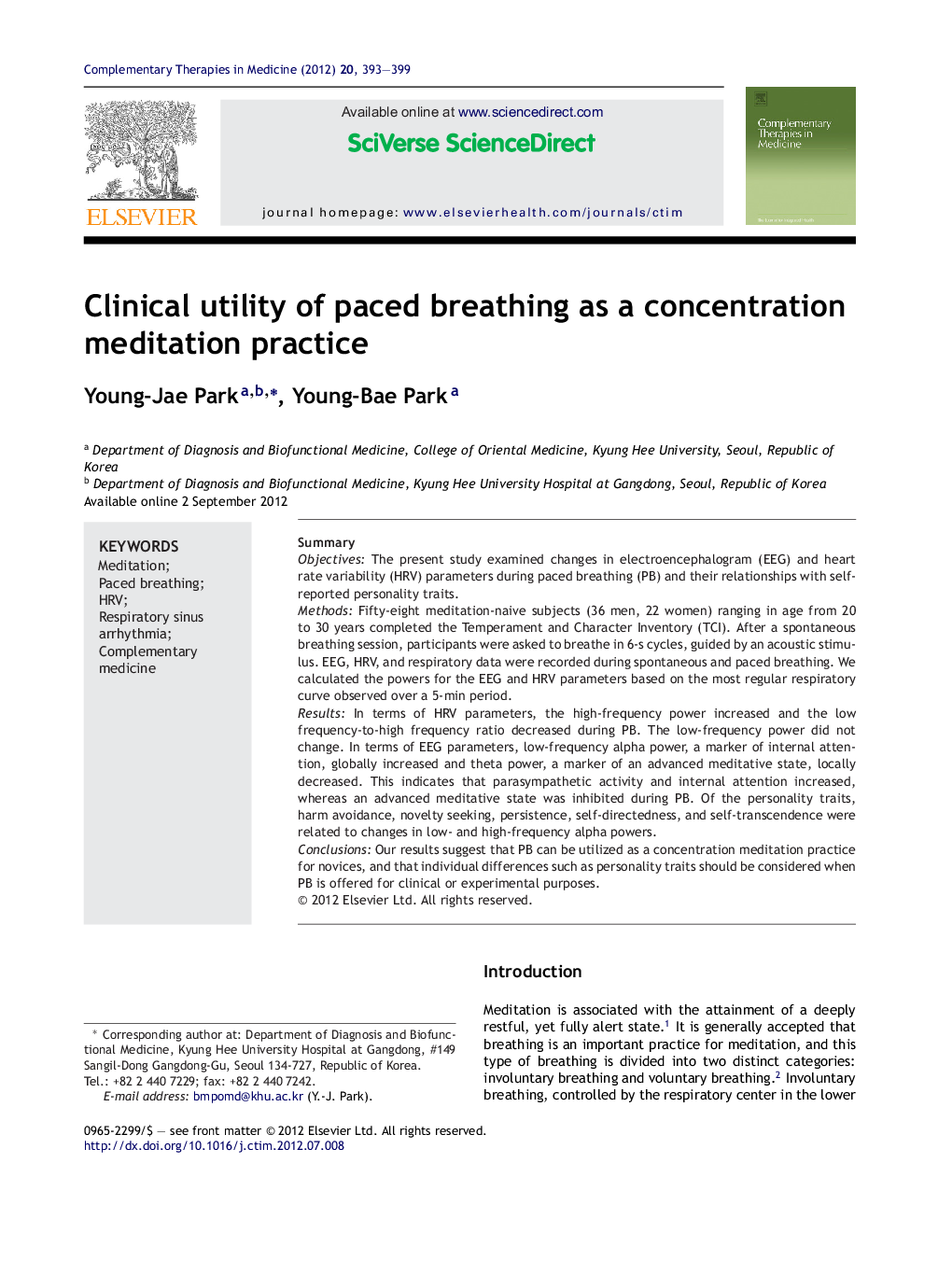| Article ID | Journal | Published Year | Pages | File Type |
|---|---|---|---|---|
| 2628691 | Complementary Therapies in Medicine | 2012 | 7 Pages |
SummaryObjectivesThe present study examined changes in electroencephalogram (EEG) and heart rate variability (HRV) parameters during paced breathing (PB) and their relationships with self-reported personality traits.MethodsFifty-eight meditation-naive subjects (36 men, 22 women) ranging in age from 20 to 30 years completed the Temperament and Character Inventory (TCI). After a spontaneous breathing session, participants were asked to breathe in 6-s cycles, guided by an acoustic stimulus. EEG, HRV, and respiratory data were recorded during spontaneous and paced breathing. We calculated the powers for the EEG and HRV parameters based on the most regular respiratory curve observed over a 5-min period.ResultsIn terms of HRV parameters, the high-frequency power increased and the low frequency-to-high frequency ratio decreased during PB. The low-frequency power did not change. In terms of EEG parameters, low-frequency alpha power, a marker of internal attention, globally increased and theta power, a marker of an advanced meditative state, locally decreased. This indicates that parasympathetic activity and internal attention increased, whereas an advanced meditative state was inhibited during PB. Of the personality traits, harm avoidance, novelty seeking, persistence, self-directedness, and self-transcendence were related to changes in low- and high-frequency alpha powers.ConclusionsOur results suggest that PB can be utilized as a concentration meditation practice for novices, and that individual differences such as personality traits should be considered when PB is offered for clinical or experimental purposes.
